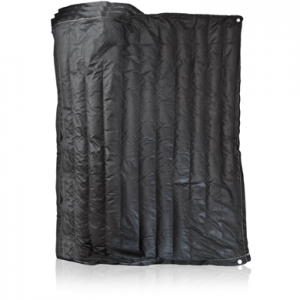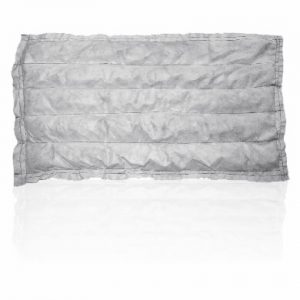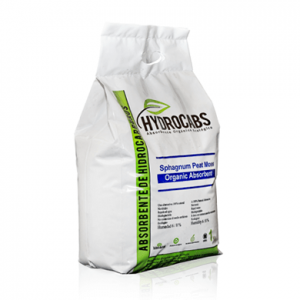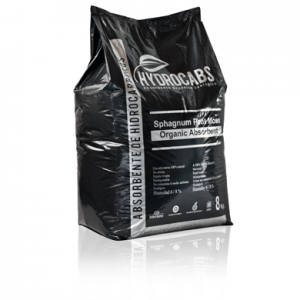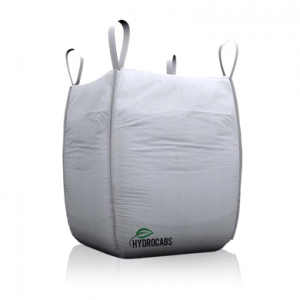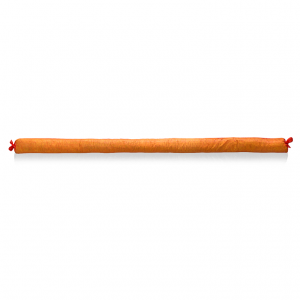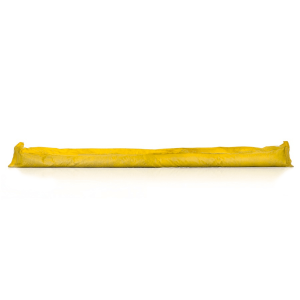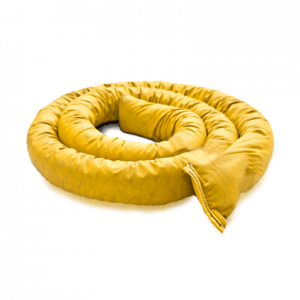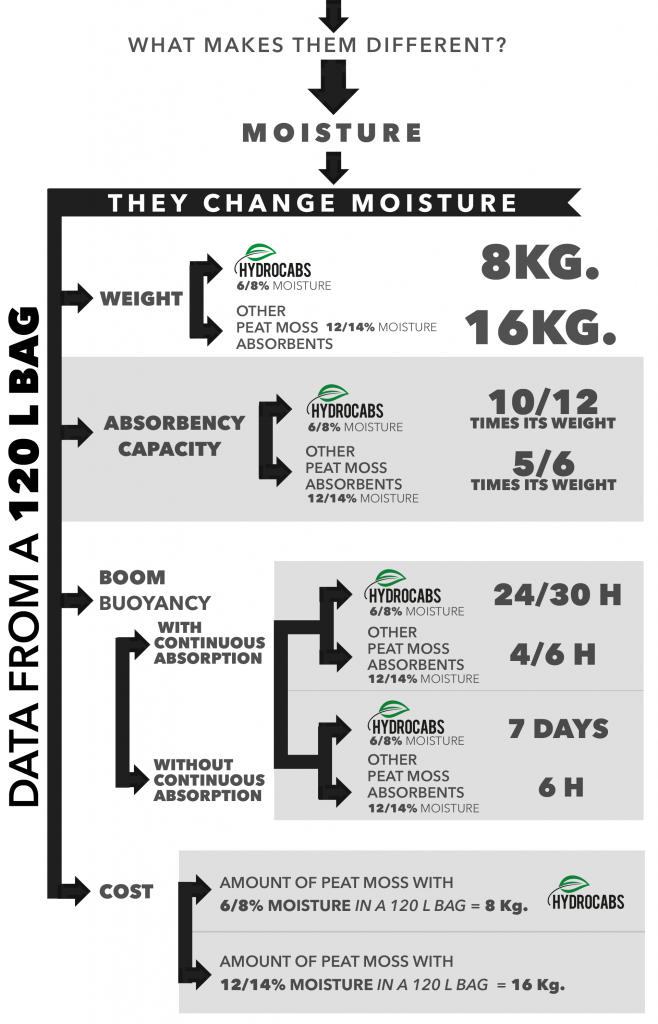[rev_slider_vc alias=»absorbents»]
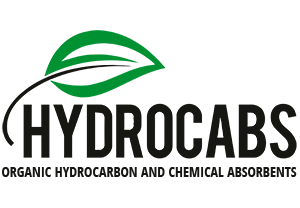
To clean up oil spills, our company has successfully developed HYDROCABS in its Environmental Management Department
HYDROCABS is made from Sphagnum Peat Moss fibers, which have been selected, dried, shaken and bagged. After these operations, a hydrophobic product with the property of absorbing hydrophobic substances such as hydrocarbons, oils, fats, proteins and which repels water is obtained.
Hydrocabs products
Pads - Bags - Booms
Industrial absorbents are used to clean oil spills (raw oil and its derivatives) and chemicals, which can lead to soil or water contamination.
There are different types of absorbents: mineral ones, based on clay, such as sepiolites, and organic ones, which are peat-based.
✿ The first ones turn out to be abrasive because they have silica crystals in their composition and so have less absorption power.
✿ Peat based absorbents have great absorption power and bring substantial benefits to the environment. In its natural state, due to its molecular properties, it is oleophilic (it absorbs oils quickly) and hydrophobic (it repels water).
To increase its absorption process, peat fibers are specially treated to absorb and encapsulate oil, solvents, heavy metals, pesticides and herbicides on contact.
COMPARATIVE TABLE. FIND OUT WHY YOU SHOULD CHOOSE US.
COMPARATIVE TABLE OF ABSORBENCE BASED ON 120 LITERS OF RAW PETROLEUM WITH A SPECIFIC GRAVITY OF 0.904
| Product | Suction | Weight | Required quantity | Acids | In Water | Remediation | Vapour Suppression | Renewable resource | Non-abrasive |
 Moisture 6/8% Moisture 6/8% | NO | 8 kg | 1 Bag | YES | YES | YES | YES | YES | YES |
| Moss Peat Moisture 12/15% | NO | 16 Kg | 2 Bags | YES | NO | YES | YES | YES | YES |
| Clay | YES | 225 kg | 8 - 10 Bags | NO | NO | NO | NO | NO | NO |
| Cellulose | YES | 36 kg | 2.6 Bags | NO | YES | NO | NO | YES | YES |
| Diatomaceous earth | YES | 109 kg | 5.45 Bags | NO | NO | NO | NO | NO | NO |
| Sand | YES | 500 kg | 20 Bags | NO | NO | NO | NO | NO | NO |
| Recycled paper | YES | 34 kg | 3.3 Bags | NO | NO | NO | NO | NO | NO |
| Polypropylene | YES | 10 kg | 1 Bags | NO | YES | NO | NO | YES | YES |
| Product | Suction | Weight | Required quantity | Acids | In Water | Remediation | Vapour Suppression | Renewable resource | Non-abrasive |
TYPICAL ABSORPTION TIMES ARE THE FOLLOWING:
| GASOLINE | 2 seconds |
| DIESEL OIL | 5 seconds |
| MOTOR OIL | 20 seconds |
| BLOOD | 30 seconds |
| LIGHT RAW OIL | 60 seconds |
| HEAVY RAW OIL | 90 seconds |
| GASOLINE | 2 seconds |
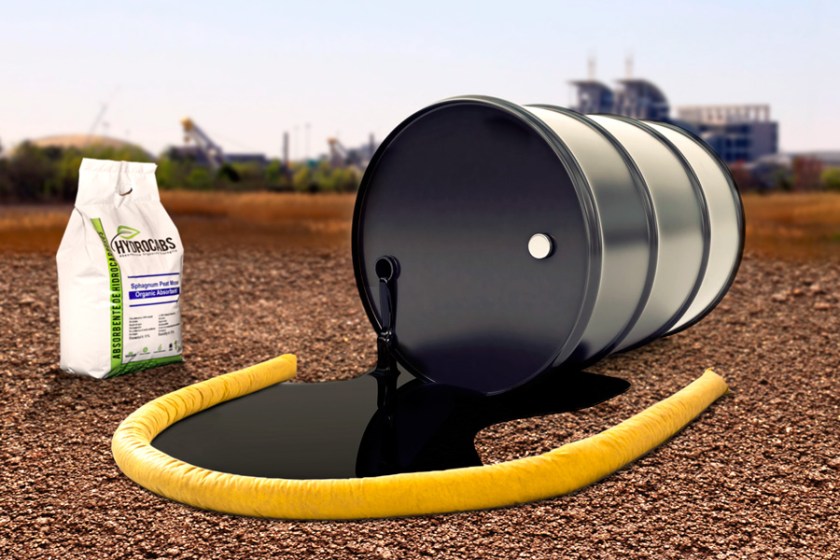
They absorb a high range of chemicals, not just heavy raw oil.
THIS LIST INCLUDES SOME OF THE HYDROCARBONS AND INDUSTRIAL CHEMICALS THAT CAN BE ABSORBED:
| Paraffinic oils. | Dinitrotolueno. | Kerosene. |
| Motor oil. | Styrene. | Methanol. |
| Acids Bases. | Ethanol. | Nitrobenzene. |
| Acetate. | Petroleum ether. | Pentane. |
| Acetone. | Ethyl ether. | Petroleum. |
| Acetonitrile. | Ethylbenzene. | Pyridine. |
| Benzene. | Ethylene glycol. | Propanol. |
| Bromodichloromethane. | Diesel Oil. | Organic Solvents. |
| Bunker C. | Heptane. | Tetrachloroethane. |
| Butanol. | Hexane. | Tetrachlorethylene. |
| Butyl. | Hexachlorobenzene. | Tinctures. |
| Cyclohexane. | Hexachlorobutadiene. | Toluene. |
| Chloroform. | Hexachloroethane. | Trichlorethylene. |
| Dichlorobenzene. | Hexano. | Vinyl |
| 1-2 Dichloroethane. | Isobutanol. | Xylene. |
| 1-1 Dichloroethylene. | Isoprene. | |
| Dichloromethane. | Isopropanol. |
